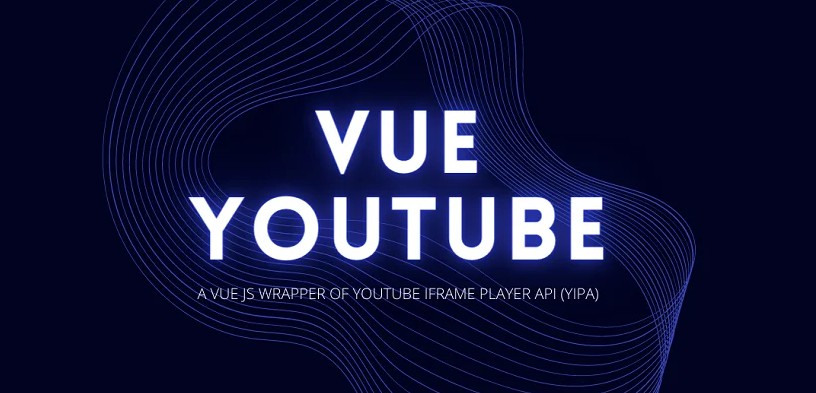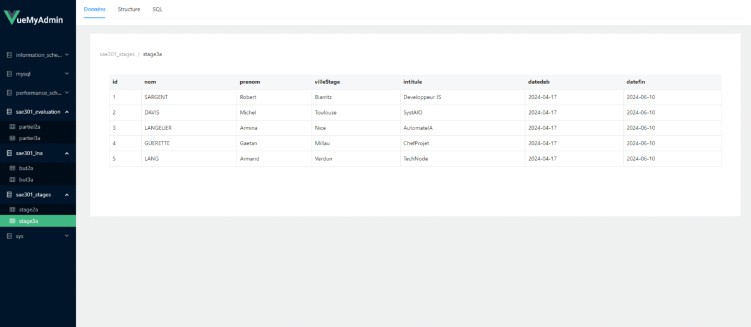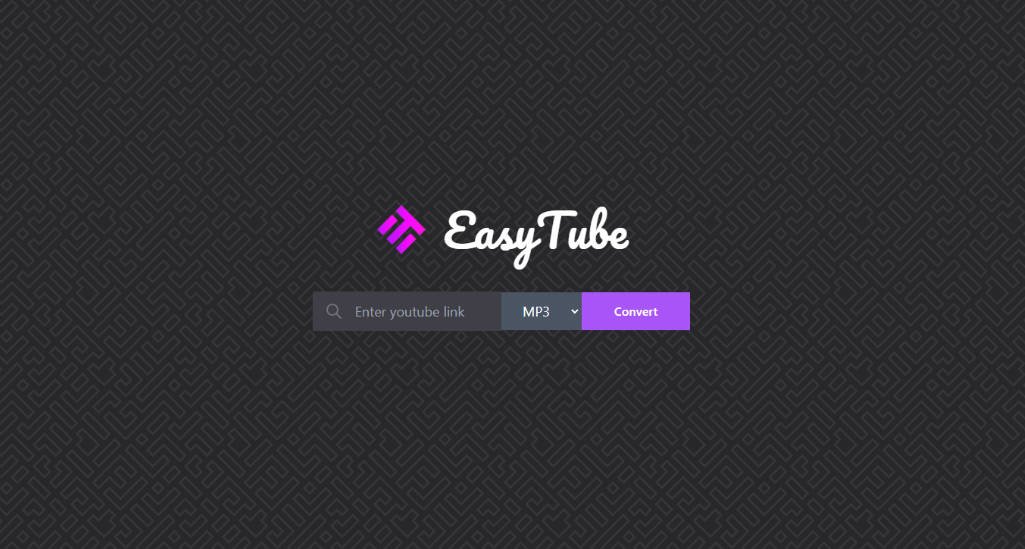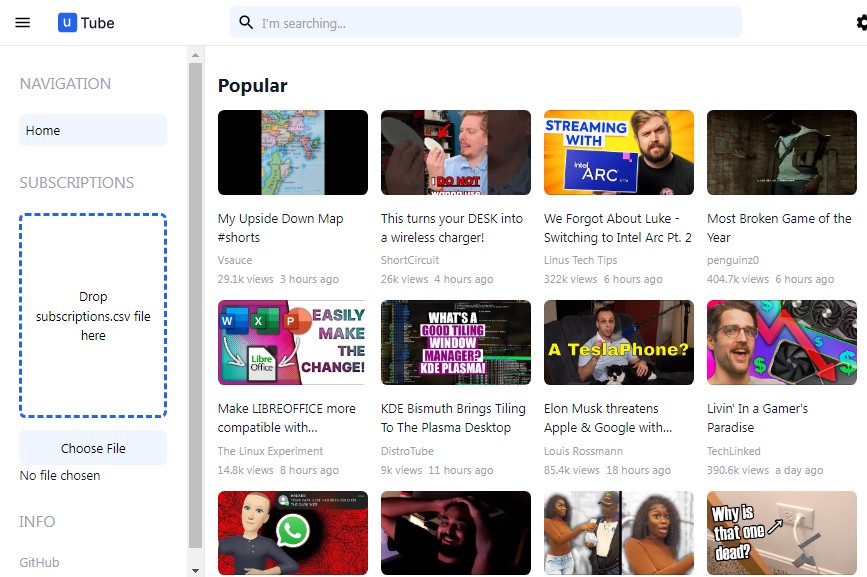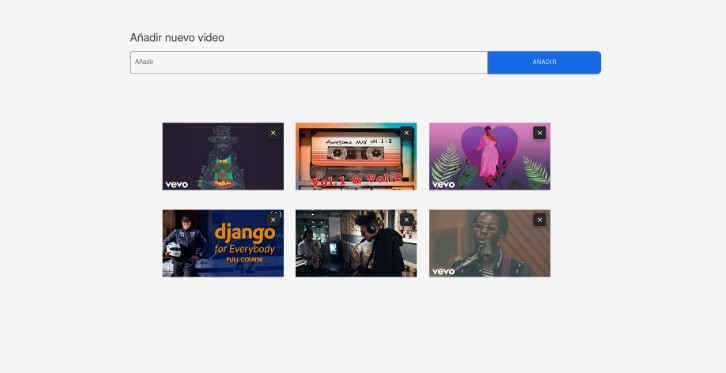Vue3 Ytframe
The component uses the composition API to create a reactive player instance and define various methods to control the player’s behavior.
Why?
- Supports Vue 3
- Uses the composition API
- No dependencies other than Vue 3
- Supports all the methods and events provided by the YouTube iFrame API
Installation
npm publish is not finished yet. So, you can use the package directly from the GitHub repository. The component code is available here at https://github.com/kiranparajuli589/vue3-youtube/blob/master/src/VYoutube.vue
Props
videoId(required) – The ID of the YouTube video to play.width(optional) – The width of the player. Default is “100%”.height(optional) – The height of the player. Default is “100%”.playerVars(optional) – An object containing additional options to pass to the YouTube iFrame player. Default is an empty object. Refer to the https://developers.google.com/youtube/player_parameters for a list of available options.
Methods
The following methods are available to control the behavior of the YouTube player:
playVideo()– Plays the currently loaded video.pauseVideo()– Pauses the currently loaded video.stopVideo()– Stops the currently loaded video.seekTo(seconds: number, allowSeekAhead: boolean) – Seeks to a specified time in the video. The seconds parameter is the time in seconds to seek to, and allowSeekAhead is a boolean indicating whether to allow the player to make a new request for unbuffered data if the time is outside of the currently buffered video data.mute()– Mutes the player.unMute()– Unmutes the player.isMuted()– Returns a boolean indicating whether the player is muted.setVolume(volume: number)– Sets the player’s volume. The volume parameter should be a number between 0 and 100.getVolume()– Returns the player’s current volume level as a number between 0 and 100.setSize(width: number, height: number) – Sets the player’s width and height.getDuration()– Returns the duration of the currently playing video in seconds.getCurrentTime()– Returns the current playback time in seconds.getVideoEmbedCode()– Returns the embed code for the currently playing video.getVideoUrl()– Returns the YouTube.com URL for the currently playing video.getVideoLoadedFraction()– Returns a number between 0 and 1 indicating the percentage of the video that has been loaded.getPlayerState()– Returns the current state of the player.getPlayerStateText()– Returns a string describing the current state of the player.getPlaybackRate()– Returns the current playback rate of the player.setPlaybackRate(suggestedRate: number)– Sets the suggested playback rate for the player. The suggestedRate parameter should be a number representing the suggested playback rate.getOptions(opt: string)– Returns the player options for a specified key.
Events
The following events are available to listen to:
ready– Emitted when the player is ready to play.stateChange– Emitted when the player’s state changes.playing– Emitted when the player starts playing.paused– Emitted when the player is paused.ended– Emitted when the player has finished playing.error– Emitted when an error occurs.apiChange– Emitted when the player’s API changes.playbackQualityChange– Emitted when the player’s playback quality changes.playbackRateChange– Emitted when the player’s playback rate changes.
Usage
Here is simple example usage of the component:
<template>
<div class="player-page">
<VueYtframe
v-for="video in videosSet1"
:key="video"
ref="yt"
:video-id="video"
height="300"
width="100%"
:player-vars="{ autoplay: 0, listType: 'user_uploads' }"
@state-change="onStateChange"
/>
<br>
<VueYtframe
v-for="video in videosSet2"
:key="video"
ref="yt"
:video-id="video"
height="300"
width="100%"
:player-vars="{ autoplay: 0, listType: 'user_uploads' }"
@state-change="onStateChange"
/>
</div>
</template>
<script setup>
import {ref} from "vue";
import VueYtframe from "vue3-ytframe"
// declare a template reference
const yt = ref(null)
const videosSet1 = [
"kGb9ftWR3l8",
"U_0iZpQPPoA",
]
const videosSet2 = [
"Ve_PI0i43QI",
"km3ZBzuFntw"
]
// a handler where no two or more frames are allowed to play simultaneously
const onStateChange = (event) => {
if (event.getPlayerState() === 1) {
// control the frames using the template reference
yt.value.forEach((video) => {
if (video.getVideoUrl() !== event.getVideoUrl()) {
video.pauseVideo()
}
})
}
}
</script>
